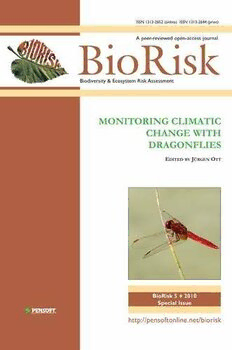
Monitoring Climatic Change with Dragonflies PDF
293 Pages·2010·29.208 MB·English
Most books are stored in the elastic cloud where traffic is expensive. For this reason, we have a limit on daily download.
Preview Monitoring Climatic Change with Dragonflies
Description:
Monitoring Climate Change with Dragonflies provides an important new tool for dealing with arguably the most important environmental challenge facing modern humanity. It provides a solid foundationon which subsequent research can be built, and can help ensure that responses to climate change are as appropriate as possible. This book combines papers from two symposia of the World Wide Dragonfly Association (WDA) in Pontevedra (2005) and Swakopmund (2007) - which were compiled by the editor, as well as some additional contributions and a general view on biodiversity related climate change impacts from the EC funded ALARM project. All the contributions show, that there are already and will be even more changes within dragonfly as well as general aquatic communities, leading to threats for many species, in particular the stenoecious ones. We are far from general conclusions and understanding of all factors and effects, as still too many questions are open: e.g. i) whether adaptations of species to new conditions are possible, and if yes, to which extent, ii) what are long term and synergisticeff ects, and iii) whether there are management options to mitigate climate change impacts. But already now it is clear, that there is an urgent need for action to reduce the effects of climatic changes (not only) for dragonfly habitats.
See more
The list of books you might like
Most books are stored in the elastic cloud where traffic is expensive. For this reason, we have a limit on daily download.
